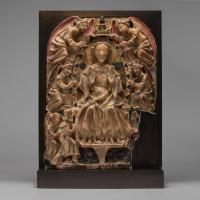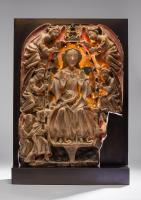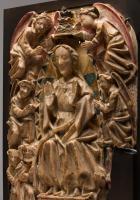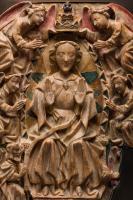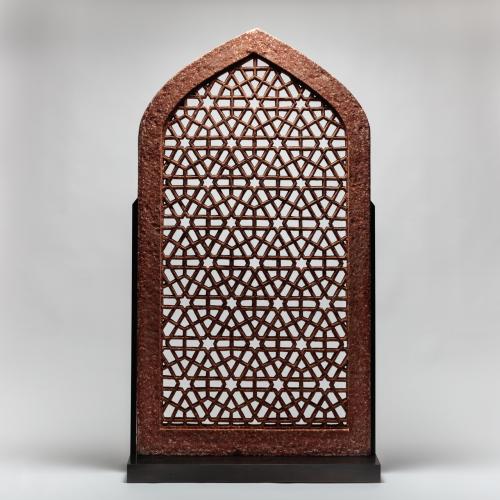
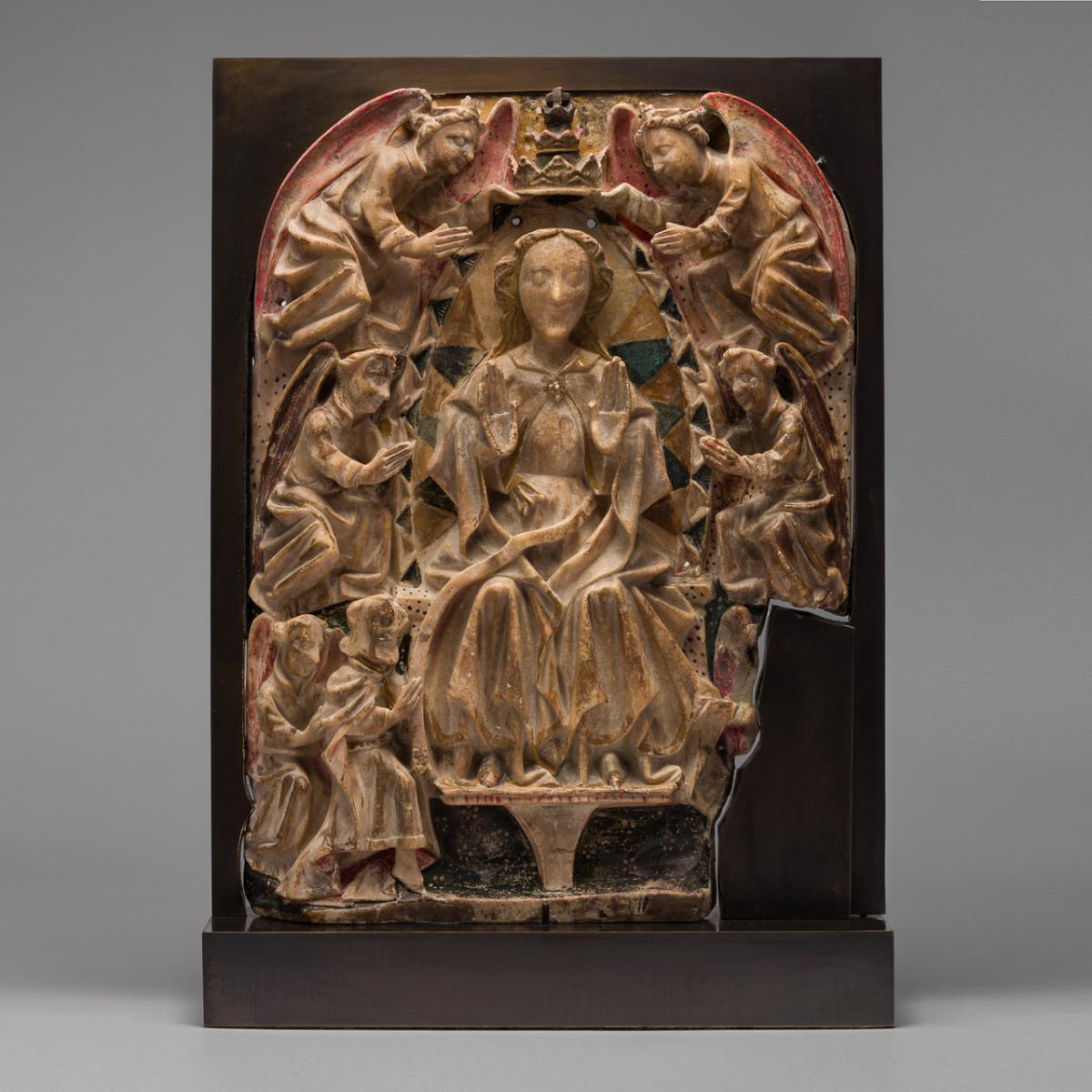
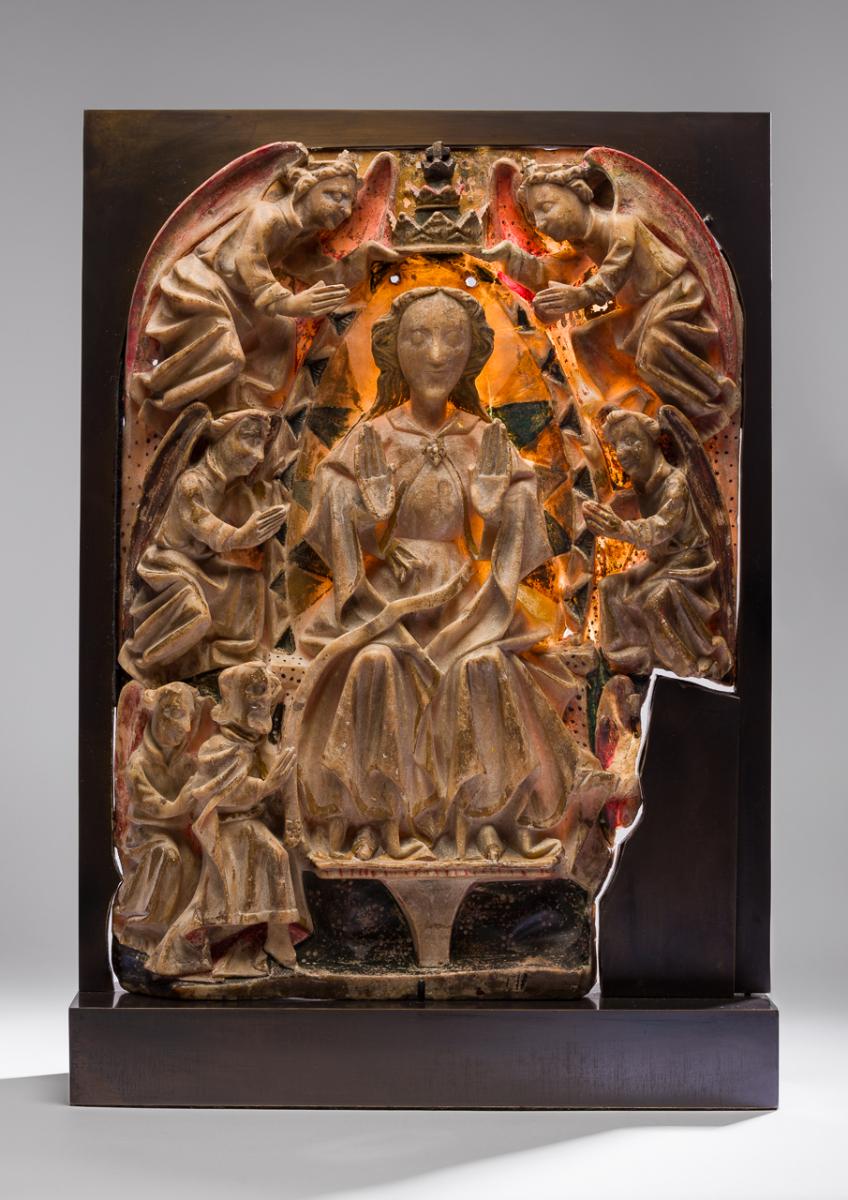
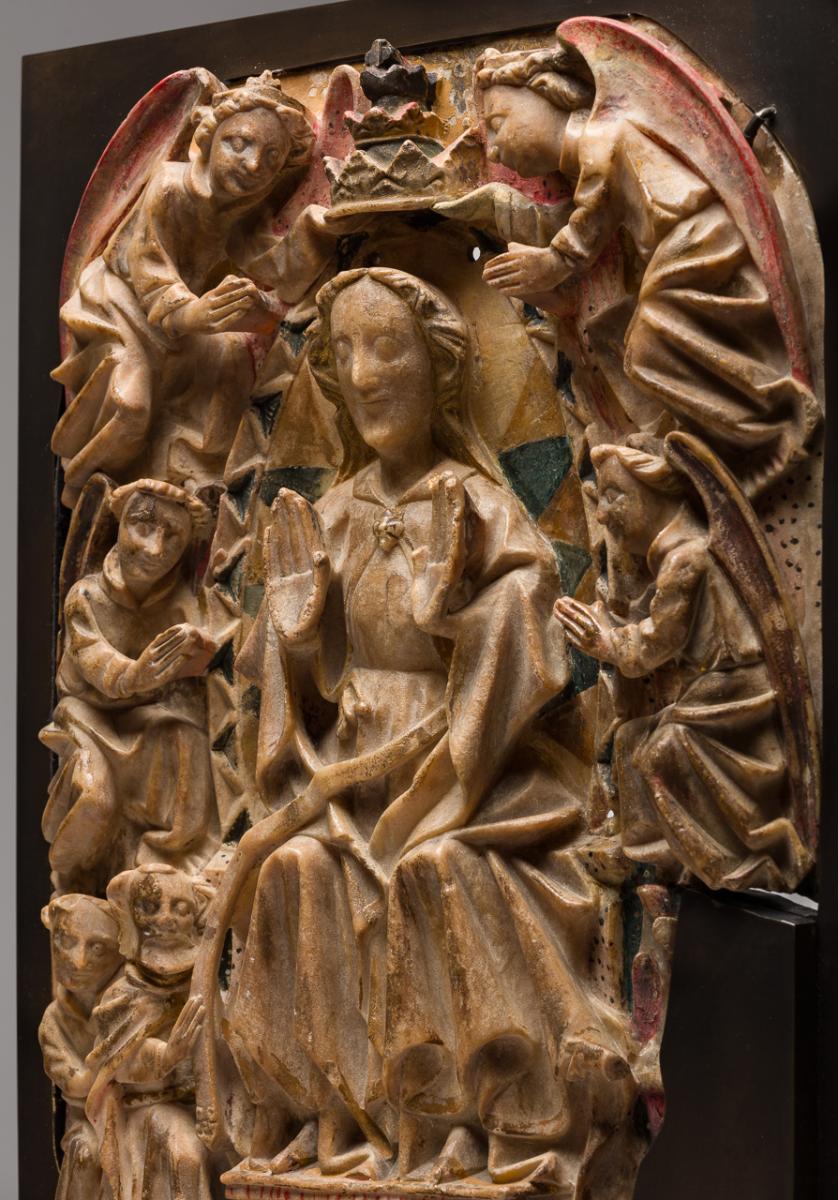
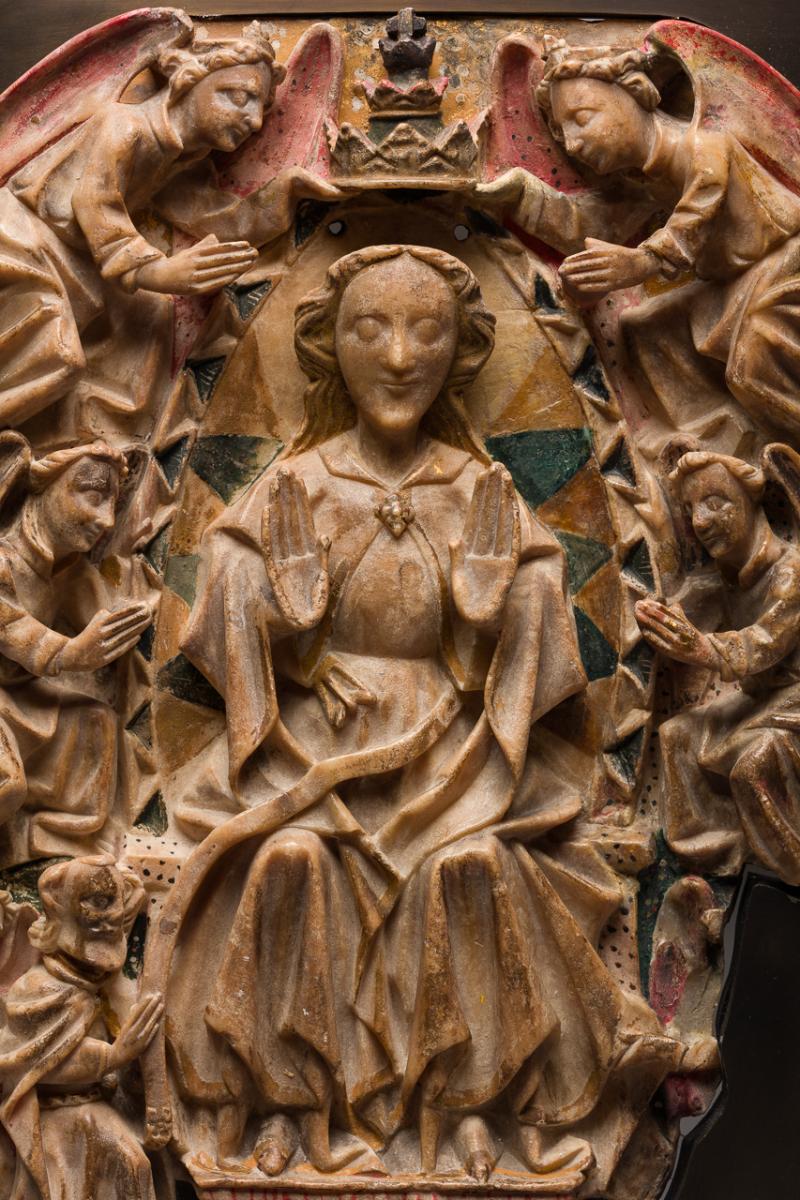
Price on application
This object is eligible for a Certificate of BADA Provenance
The BADA Standard
- Since 1918, BADA has been the leading association for the antiques and fine art trade
- Members are elected for their knowledge, integrity and quality of stock
- Our clients are protected by BADA’s code of conduct
- Our dealers’ membership is reviewed and renewed annually
- Bada.org is a non-profit site: clients deal directly with members and they pay no hidden fees
Nottingham Alabaster Virgin in Majesty.
Made in England for a Norman Church.
Mid to late 15th century.
Carved and painted alabaster.
43cm high, 32cm wide, 5.5cm deep; frame 51cm by 36cm.
Provenance: Norman private collection, thence by descent.
Carved from a single block of alabaster, this remarkable relief panel preserves polychrome in rich, deep verdigris (copper green), cinnabar red, and lead white pigments with much of the original gilding. Mounted within a contemporary bronze frame, the current setting gestures toward the initial framing of this alabaster carving, once cradled within a freestanding or hanging wooden polychrome tabernacle or altarpiece. The honeyed luminosity of this alabaster is revealed through the exposed back, as the thin ground of this high-relief carving recalls the early medieval use of thin-cut alabaster as windowpanes – the precursor to stained-glass.
With a striking and skillful combination of iconographies, this English-made panel was tailored to the specially expressed desires of its commissioners, a family of Norman patrons. Alabaster carving was ideal for personal, intimate devotional works. Desire for the material motivated the spread of English artworks across the Channel. Indeed, such panels were exported after production in England and then sold in France, northern Germany, Ireland, Italy, Spain, and Portugal. Carved reliefs in a rectangular format such as this one were often mounted in sequence, forming monumental altarpieces. Finished alabaster panels were fixed into position in a wooden framework by lead wires, the holes of which are still visible here. Iconographic details in this carving suggest that it formed the core of an intimate and personal altarpiece.
With rich visual and theological imagery, the Virgin Mary is majestically seated on a speckled throne, backed by a multicolored triangle-bordered, rayonnant mandorla and flanked by six angels. Soft features and large, wide eyes give the figures on this panel an air of benevolence. The lowest angel to the Virgin’s left was largely destroyed, leaving a tantalizing glimpse of a red wing and a hand that seems to brush at the hem of the Virgin’s dress. Presented in a striking frontal pose, her hands raised, palms open, this carving recalls the panel of the Virgin in the famous Swansea altarpiece at the Victoria & Albert Musuem (accession no. A.89:1 to 8, 10 to 15-1919), a rare survival that depicts the Joys of the Virgin Mary. Devotion to the Joys of the Virgin (given variously as either seven or five Joys, including the Annunciation, Nativity, Adoration of the Magi, Resurrection of Christ, Ascension of Christ, Assumption of the Virgin, and Coronation of the Virgin) originated in the Franciscan sphere in the fifteenth century. An elaborate three-tiered crown recalling the papal tiara is suspended above the Virgin’s head by the two uppermost angels, whose red spotted wings form the curved edges of the panel. Traditionally, the crowning is performed by God the Father, Christ, or the Holy Spirit (represented as a dove) whose figure may have presided over the coronation in the original composition of this panel, which has been cut at the top. Like the Swansea panel, this panel features an eighth figure, Saint Thomas, who receives the girdle of the Virgin; generally, an event depicted as part of the Assumption, yet here the artist has cleverly combined two Joys into one panel. In the dynamic composition of our alabaster, the girdle swoops across the central figure as Thomas pulls it from the Virgin’s waist, an undulating line carved in the form of a late gothic belt. In other respects, the Swansea altar displays a more typical standing Virgin, while this unusual piece shows her seated and enthroned in Majesty. Chronologically, then, our skillful carving would have formed the final, penultimate image in the cycle of the Joys of the Virgin, depicting the Virgin Mary triumphantly assumed into heaven, serenely enthroned, and in the act of her coronation. It is likely that this relief carving was painted by the same workshop that painted the panels for the basilica of Saint-Michel in Bordeaux, suggesting a specialized English workshop tailored to French commissions.
n.b. accession nos are clickable links
Literature:
Mairie de Bordeaux. Le retable en alabâtre des 7 joies de la Vierge, basilique Saint-Michel. Bordeaux: Bordeaux Patrimoine Mondial, 2019.
Eric MacLagan. “An English Alabaster Altarpiece in the Victoria and Albert Museum,” The Burlington Magazine for Connoisseurs 36.203 (1920): pp 53–65.
Nigel Ramsay. “‘Burton-Upon-Trent, not Nottingham.’: The Evolving Study of Medieval English Alabaster Sculpture.” In Zuleika Murat (ed.) English Alabaster Carvings and Their Cultural Contexts. Martlesham: Boydell & Brewer, 2019. pp 35-50.
Paul Williamson (ed.). Object of Devotion. Medieval English Alabaster Sculpture from
the Victoria and Albert Museum. Exh. Cat., Palm Beach, FL, Society of the Four Arts,
and five other institutions, with contributions by F. Cannan, E. Duffy and S. Perkinson. Alexandria (2010).
The BADA Standard
- Since 1918, BADA has been the leading association for the antiques and fine art trade
- Members are elected for their knowledge, integrity and quality of stock
- Our clients are protected by BADA’s code of conduct
- Our dealers’ membership is reviewed and renewed annually
- Bada.org is a non-profit site: clients deal directly with members and they pay no hidden fees


